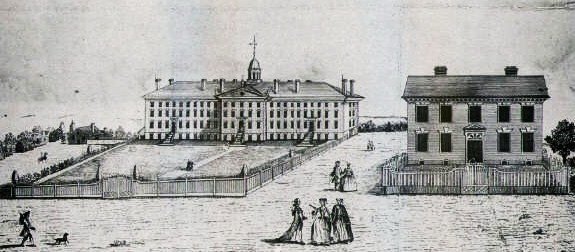In the second half of the 18th century, Americans tended to use the word plot to refer to a plat or piece of ground of small or moderate size designated for a specific purpose, usually the growing of grass. This became a popular garden design component as beds of fussy flowers faded from popularity among the gentry.
In 1767, according to Deborah Norris Logan, Charles Norris in Philadelphia, Pennsylvania, had his garden, "...laid out in square parterres and beds, regularly intersected by graveled and grasswalks and alleys...with a grass plot and trees in front, and roses intermixed with currant bushes, around its borders." A parterre refers to a formal area of planting, usually square or rectangular.
Charles Carroll of Annapolis instructed his son in 1775, "Examine the Gardiner strictly as to ... Whether he is an expert at levelling, making grass plots & Bowling Greens, Slopes, & turfing them well."
When John Enys visited Mount Vernon in February of 1788, he wrote, "The front by which we entered had a Gras plot before
 it with a road round it for Carriages planted on each side with a number of different kinds of Trees among the rest some Weeping Willows which seem to flourish very well."
it with a road round it for Carriages planted on each side with a number of different kinds of Trees among the rest some Weeping Willows which seem to flourish very well."When the fashion changed from planting intricate flower beds to more simple yet elegant, green gardens, Elizabeth Drinker wrote of replanning her garden Philadelphia, "flower roots...were dug out of ye beds on ye south side of our Garden--as my husband intends making grass-plots and planting trees in that side."
Flowers would regain their popularity toward the end of the century, when the midling sort found enough free time to begin pleasure gardens of their own.
.



 James Madison's Montpelier, Orange County, Virginia by Baroness Hyde de Neuville. c 1800
James Madison's Montpelier, Orange County, Virginia by Baroness Hyde de Neuville. c 1800


 Thomas Jefferson's Monticello, Virginia, in 1820s
Thomas Jefferson's Monticello, Virginia, in 1820s

